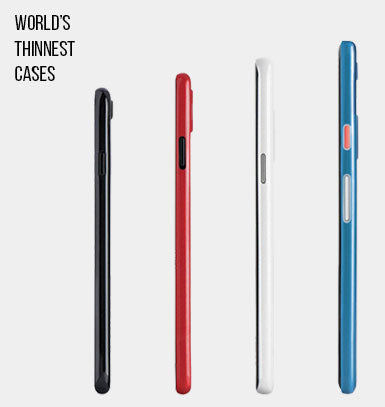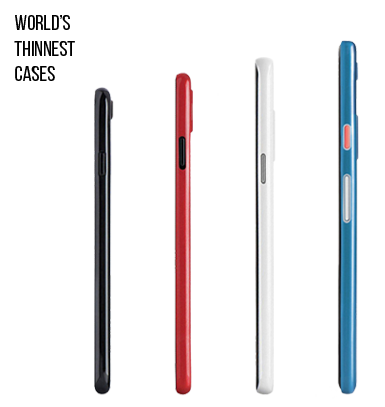Tempered Glass vs. Plastic: The Right Screen Protector for You
Cracked or broken touchscreens are among the most common forms of smartphone damage these days. And unfortunately, if you find yourself having to pay for a screen replacement out-of-pocket—especially for the latest and most popular models like the iPhone 6s or the Samsung Galaxy S7 Edge—you can easily expect to spend £140 or more. Fortunately, [...]
Cracked or broken touchscreens are among the most common forms of smartphone damage these days. And unfortunately, if you find yourself having to pay for a screen replacement out-of-pocket—especially for the latest and most popular models like the iPhone 6s or the Samsung Galaxy S7 Edge—you can easily expect to spend £140 or more. Fortunately, investing in a screen protector for your smartphone is a relatively cheap and easy way to reduce the chances of screen damage. If you're in the market for a screen protector, you might be wondering whether a tempered glass or plastic option is right for you. By carefully weighing the pros and cons of each option, you can ultimately make a well informed decision.
Tempered Glass Screen Protectors
Tempered glass screen protectors have become increasingly popular in recent years. They're typically sold individually rather than in bulk packs and are made out of a tempered glass that doesn't easily shatter and, if it does break, does so in a way that prevents dangerous shards from becoming a hazard.
Advantages
Perhaps the greatest advantage of using a tempered glass screen protector is that the material is thicker and stronger than that of your typical plastic screen protector. As a result, your screen protector will be extremely resistant to scratches and other visible damage. This is especially important for those who tend to store their smartphones in a bag or purse with keys or other objects that could otherwise scratch the screen.
In addition to providing a thicker and stronger layer of protection for your phone's screen, a tempered glass screen protector also has a look and feel that's very similar to your standard smartphone screen. As a result, you may not notice the screen protector as much as you would with a plastic one.
Potential Drawbacks
On the other hand, tempered glass screen protectors are often significantly more expensive than traditional plastic screen protectors. It's not uncommon to spend at least £25 for a single tempered glass protector, which may seem steep for some. Furthermore, because of the added thickness provided by a tempered glass screen protector, some phone cases may not fit properly, or the home button of the phone itself may seem more indented. This can take some getting used to for phone users.
Plastic Screen Protectors
Plastic screen protectors are the more traditional choice for those who wish to cover their phone screens without breaking the bank.
Advantages
In addition to being a lot cheaper than tempered glass screen protectors, plastic screen protectors have the added benefit of being easily cut or trimmed to fit any phone. This cannot be done with a glass screen protector. Plastic protectors also come in a variety of texture options, ranging from smooth to matte. Some even have a built-in privacy screen that will prevent people from peering over your shoulder to see your phone screen.
Plastic screen protectors can also be easily purchased in bulk, resulting in further cost savings and making it easy to keep extra screen protectors on-hand.
It’s important to note that there are different tiers of plastic plastic screens. For example, Ultimate Shield’s Invisible Film is completely different than standard plastic film screen protectors. The film used by Ultimate Shield is extremely durable and military grade—yep, the same films used to protect military equipment and vehicles. In addition to this added protection, it is applied with a water solution which makes application easy and bubble-free.
Potential Drawbacks
Plastic screen protectors are typically thinner than tempered glass ones, making them more prone to scratches and failure. They can also be difficult to apply, and one mistake in application could lead to the formation of bubbles or other imperfections on the surface of the screen protector itself.
Overall, both tempered glass and plastic screen protectors can be great options for avoiding the despair and expense of repairing or even replacing a cracked or broken smartphone screen. You can make the decision that's right for you by assessing your needs and budget before purchasing a screen protector for your phone.
For information on Ultimate Shield’s protection options, click here.
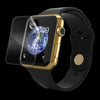 Apple Watch Series 1 / 2 / 3 Invisible Film Screen Protector
Apple Watch Series 1 / 2 / 3 Invisible Film Screen Protector 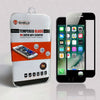 Apple iPhone 7/8/SE (Black) Tempered Glass Screen Protector
Apple iPhone 7/8/SE (Black) Tempered Glass Screen Protector 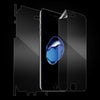 Apple iPhone 7/8/SE Invisible Film Screen Protector
Apple iPhone 7/8/SE Invisible Film Screen Protector 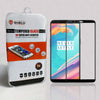 OnePlus 5T Tempered Glass Screen Protector (Black)
OnePlus 5T Tempered Glass Screen Protector (Black) 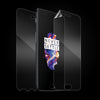 OnePlus 5 Invisible Film Screen Protector
OnePlus 5 Invisible Film Screen Protector 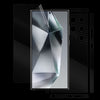 Samsung Galaxy S24 Ultra Invisible Film Screen Protector
Samsung Galaxy S24 Ultra Invisible Film Screen Protector 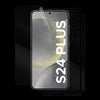 Samsung Galaxy S24 Plus Invisible Film Screen Protector
Samsung Galaxy S24 Plus Invisible Film Screen Protector 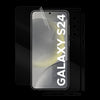 Samsung Galaxy S24 Invisible Film Screen Protector
Samsung Galaxy S24 Invisible Film Screen Protector 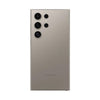 Ultimate Thin Case for Samsung Galaxy S24 Ultra
Ultimate Thin Case for Samsung Galaxy S24 Ultra 